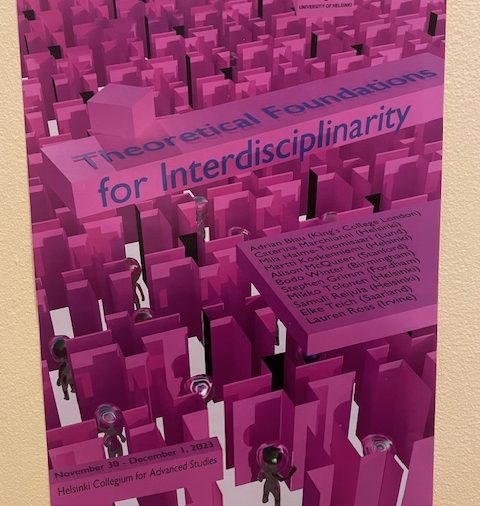07.12.2023
Invited Talk at Symposium on Theoretical Foundations for Interdisciplinarity
Last week Elke Teich was invited to give a talk on “Language use in science – convergence, diversity, dynamicity“ at the Symposium on Theoretical Foundations for Interdisciplinarity (November 30 – December 1) which took place at the Helsinki Collegium for Advanced Studies. You can find the abstract below:
Language plays a crucial role in scientific processes as it fulfills the core epistemic functions of denoting and interpreting. As science developed to become an established socio-cultural domain of activity from the 17th century onwards, a specific linguistic code emerged for scientific communication that is characterized by abstractness, technicality, and informational density. While optimizing communication among experts, the specific linguistic properties of scientific language (e.g. complex nominal expressions, implicit logical relations, high lexical density) can hinder communication with non-specialist audiences, learners, and even across disciplines.
Against this background, in my talk I ask to what extent and in which regards scientific language is conducive or inimical to interdisciplinarity. Specifically, I will show results from selected studies highlighting three fundamental aspects of scientific language: convergence, i.e. the tacit agreement to use specific linguistic features rather than others; diversity, i.e. variation in language use according to discipline; and dynamicity, i.e. continuous adaptation and change over time. The studies are empirical using samples of scientific English from contemporary and historical usage, spanning from the mid-17th century to the 21st century. The data were collected from scientific journals, including the Transactions and Proceedings of the Royal Society of London, and compiled into linguistic corpora according to best practices (meta-data, linguistic annotation; Fischer et al., 2020). For analysis, we applied computational language models (statistical models, embeddings), combined with selected exploratory methods (e.g. clustering, classification, (relative) entropy) for evaluating and interpreting model outputs (Bizzoni et al., 2020, Teich et al., 2021). In terms of linguistic theory, we combine a functional approach (Halliday & Martin, 1993; Matthiessen, 2019) with a formal theory of communication based on Shannon’s (1948) information theory, recently widely applied as a linking theory between language and cognition (Crocker et al., 2015; https://sfb1102.uni-saarland.de/).
